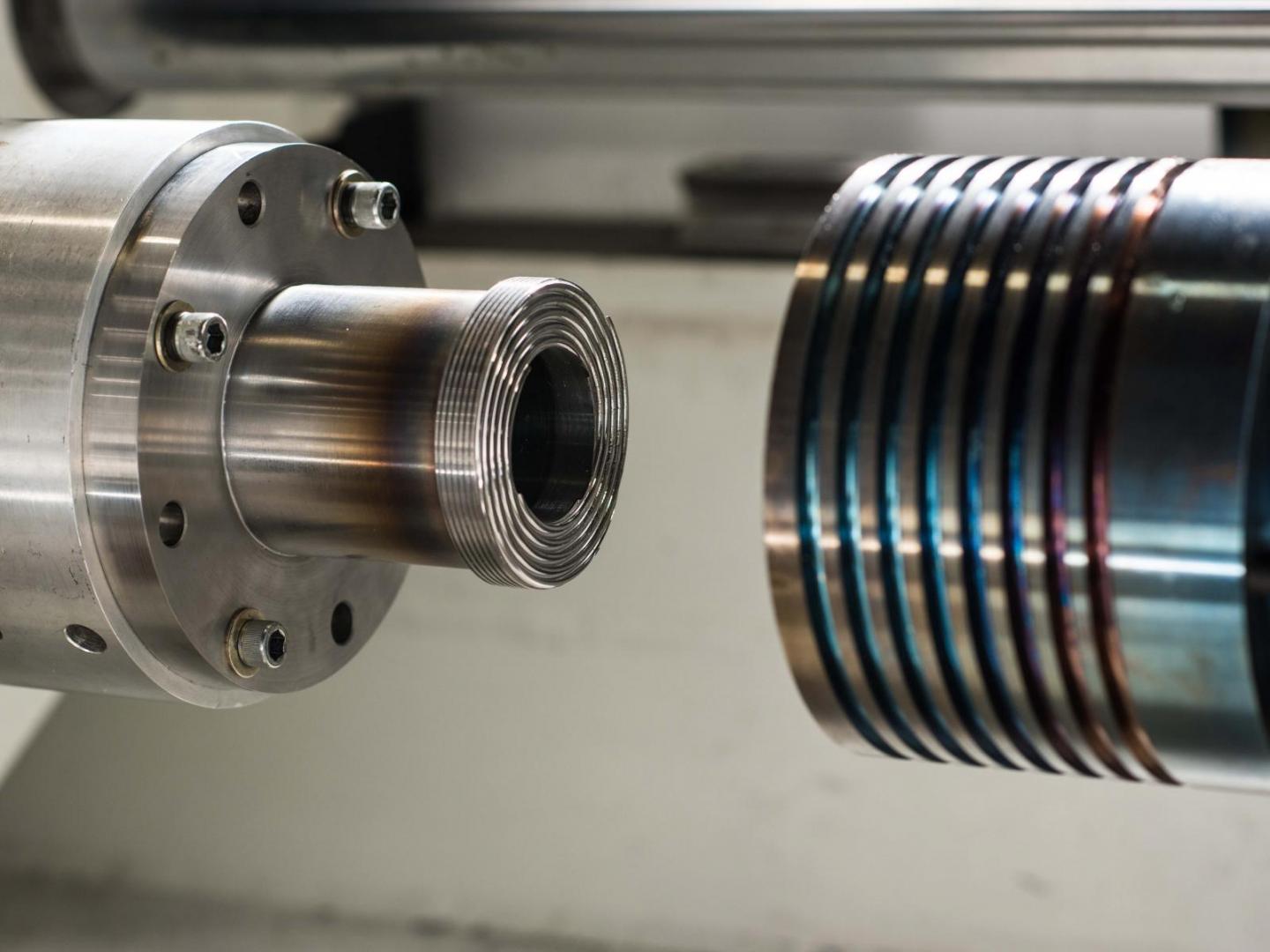Process eliminates multiple steps typical in conventional extrusion

Credit: Andrea Starr | Pacific Northwest National Laboratory
RICHLAND, WASHINGTON, June 18, 2019 – An advanced manufacturing process to produce nano structured rods and tubes directly from high-performance aluminum alloy powder — in a single step — was recently demonstrated by researchers from the Pacific Northwest National Laboratory.
Using a novel Solid Phase Processing approach, the research team eliminated several steps that are required during conventional extrusion processing of aluminum alloy powders, while also achieving a significant increase in product ductility (how far a material can stretch before it breaks).
This is good news for sectors such as the automotive industry, where the high cost of manufacturing has historically limited the use of high-strength aluminum alloys made from powders.
The team’s research is described in the paper “High Ductility Aluminum Alloy Made from Powder by Friction Extrusion,” published in the June 2019 issue of Materialia.
Stepping Away from Conventional Extrusion
High-performance aluminum alloys made from powder have long been used in lightweight components for specialized aerospace applications, where cost is not a limiting factor. However, these alloys have typically been too expensive for the automotive industry.
A typical extrusion process for aluminum alloy powders is energy-and process-intensive, requiring multiple steps to mass produce the material. First, the loose powder must be loaded into a can and gases removed using a vacuum, which is called “degassing.” The can is then sealed, hot pressed, pre-heated, and placed into the extrusion press. After extrusion, the can is removed, or “decanned,” to reveal the extruded part made from consolidated powder.
In this study, the team eliminated many of these steps, extruding nanostructured aluminum rods directly from powder in a single step, using PNNL’s Shear Assisted Processing and Extrusion technology, or ShAPE™.
Extrusion of aluminum alloys directly from powder elimates canning, de-gassing, hot isostatic pressing, de-canning, and billet pre-heating
In the ShAPE™ process, a powder — in this case, an Al-12.4TM aluminum alloy powder provided by SCM Metal Products, Inc., a division of Kymera International — is poured into an open container. A rotating extrusion die is then forced into the powder, which generates heat at the interface between the powder and die. The material softens and easily extrudes, eliminating the need for canning, degassing, hot pressing, pre-heating, and decanning.
“This is the first published instance of an aluminum alloy powder being consolidated into nano structured extrusions using a single-step process like ShAPE™,” said PNNL materials scientist Scott Whalen, who led the study.
He added, “The elimination of both the processing steps and the need for pre-heating could dramatically reduce production time as well as lower the cost and overall embedded energy within the product, which could be beneficial for automotive manufacturers who want to make passenger vehicles more affordable, lighter, and fuel-efficient for the consumer.”
Besides providing the Al-12.4TM powder, SCM Metals Products, Inc. performed mechanical testing to validate the resulting material’s performance. PNNL and SCM Metal Products, Inc. are now collaborating on a project for DOE’s Office of Technology Transitions to scale up the process for larger diameter extrusions.
Ductility–It’s a Stretch
Elimination of processing steps and reduced heating weren’t the only successful findings by the team.
While high-performance aluminum alloys have historically shown excellent strength, they have typically been hampered by poor ductility. However, the team found dramatic improvements in the ductility of the extrusion produced by ShAPE™, measuring ductility that is two to three times that found in conventional extrusion products, and with equivalent strength.
To understand the reason for the substantial increase in ductility, transmission electron microscopy was used to evaluate the microstructures of the powder and the extruded materials. The results indicated that the ShAPE™ method refined the second phases in the powder–tiny strengthening particles of non-aluminum materials. ShAPE™ reduces the particles to nanoscale sizes and evenly distributes them throughout the aluminum matrix, increasing ductility.
###
ShAPE™ is part of PNNL’s growing suite of capabilities in Solid Phase Processing — or SPP, a disruptive approach to metals manufacturing that can be better, cheaper, and greener than melt-based methods typically associated with metals manufacturing.
The research was supported by the Materials Synthesis and Simulation Across Scales Initiative, a Laboratory Directed Research and Development project at PNNL. In addition to Kymera International, researchers from the University of California, Riverside collaborated on this project.
About PNNL
Pacific Northwest National Laboratory draws on signature capabilities in chemistry, earth sciences, and data analytics to advance scientific discovery and create solutions to the nation’s toughest challenges in energy resiliency and national security. Founded in 1965, PNNL is operated by Battelle for the U.S. Department of Energy’s Office of Science. DOE’s Office of Science is the single largest supporter of basic research in the physical sciences in the United States and is working to address some of the most pressing challenges of our time. For more information, visit PNNL’s News Center. Follow us on Facebook, Instagram, LinkedIn and Twitter.
Media Contact:
Nick Hennen
Media Relations Advisor
509-554-4533
[email protected]
Video: https:/
Media Contact
Nick Hennen
[email protected]
Original Source
https:/
Related Journal Article
http://dx.



